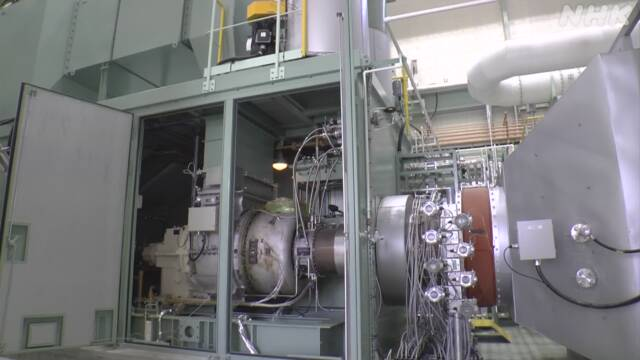
IHI: CO2 halved from thermal power generation: Ammonia utilization technology
IHI:
Utilizing ammonia, carbon dioxide emissions from thermal power generation are reduced to less than half.
Machine maker IHI has developed a new technology.
It is likely to attract expectations as a way to reduce carbon dioxide emissions.
Co-firing natural gas and ammonia:
IHI uses a method called co-firing, in which natural gas and ammonia are burned together to generate electricity.
2000 kW power generation facility:
We have developed a technology that enables stable power generation even if the ratio of ammonia is increased to 60%.
Characteristics of ammonia:
Ammonia has the characteristic that it does not emit carbon dioxide when burned.
Technology developed this time
Compared to using only natural gas as fuel, carbon dioxide emissions can be reduced to 40%.
IHI has a policy of aiming for practical use as private power generation at factories.
Japan NEDO:
It is the first technology in the world to increase the ratio of ammonia to 60% in a relatively large power generation facility.
Realization of a carbon-free society:
Ammonia is identified as an “effective fuel” in the government’s action plan, and new technologies are likely to be expected as a way to reduce emissions.
Environment | NHK News
https://www3.nhk.or.jp/news/html/20201228/k10012788381000.html
IHI Yokohama Facility to Initiate World’s First Blue Ammonia-Fueled Gas Turbine Tests
in Keeping with Joint Oil Producing Nation and User Efforts to Build Eco-Friendly Ammonia Value Chain|
October 23, 2020- press
IHI Corporation
announced today that a 2,000-kilowatt-class gas turbine at its Yokohama Works will begin co-firing tests on October 26 to employ blue ammonia as a fuel.
the Saudi Aramco Oil Company
This initiative will be a world first with gas turbines.
IHI is collaborating with a program that the Institute of Energy Economics, Japan, and the Saudi Aramco Oil Company
are undertaking to demonstrate the feasibility of the blue ammonia supply chain (see note 1).
ammonia is called “blue”
This ammonia is called “blue” as it is carbon-neutral.
That is because the process for producing ammonia from natural gas
entails capturing carbon dioxide emissions using them for enhanced oil recovery and for carbon capture and utilization.
IHI is undertaking research and development
to improve ammonia co-firing technology for gas turbines and coal-fired burners.
This is under a project that Japan’s New Energy and Industrial Technology Development Organization (see note 2)
commissioned to develop and commercialize advanced thermal power technologies and conduct advanced research into ammonia co-firing technology for such facilities.
This project
aims to raise the ammonia co-firing ratio to more than 50% on a calorific value basis.
IHI is also employing blue ammonia in co-firing tests with pulverized coal at a large-capacity combustion test facility within its Aioi Works in Hyogo Prefecture.
This is incidentally the world’s first blue ammonia and coal co-firing test.
2020FY|News|IHI Corporation
https://www.ihi.co.jp/en/all_news/2020/resources_energy_environment/1196973_2032.html
Saudi Arabia Sends Blue Ammonia to Japan in World-First Shipment
Japan will use fuel to create electricity, Saudi Aramco says
Asian country wants to be a world-leader in hydrogen fuels
Blue ammonia
is a feedstock for blue hydrogen, a version of the fuel made from fossil fuels with a process that captures and stores C02 emissions.
Hydrogen from renewable energy that creates no emissions is known as green hydrogen.
Saudi Arabia, the world’s biggest oil exporter,
is increasingly trying to counter its reputation for producing dirty energy. In recent months,
Aramco
has highlighted the low volume of greenhouse gases emitted from pumping Saudi crude, programs to boost gas production and plans to grow carbon-absorbing mangroves.